Three Employee Rights Workers in Graduate Roles Should Be Aware Of

Written by Lance Craving
Freelance Content Producer and Researcher
Having graduated from university and/ or your teaching training pathway, now’s the time to apply your newfound knowledge to your first teaching role in the big wide world of work. Whilst this is an exciting time, it’s also a chapter of your life that involves lots of apprehension and perhaps anxiety around taking the next step.
There will be so many new challenges, and suddenly you’ll have to contend with all of the responsibilities that come with any form of employment. To make the transition a little easier, it’s essential that you are aware of your employee rights and any obligations your employer will have towards you, so you know what to expect. These may change as you undertake different roles, but for graduates, here are three things you need to know when starting your new job.
Written terms and conditions
If you have gone straight from school to university to a teacher training pathway, there’s a chance that your entry position in the school system could be your first experience of employment. If this is the case, you’re likely to be unfamiliar with employment contracts, so it’s vital that you familiarise yourself with what should be included in yours. If you’re ever unsure, speak to family members, student services or senior members of staff at your school to ensure nothing has been missed out, and you’re not being unfairly treated.
You may not have necessarily received anything in writing pertaining to your employment status, but there will still be a contract in place. The contract will detail all of the rights and obligations both yourself and your employer have to one another during your term of employment. It is important that you keep a copy of the contract to hand, to prevent any disputes further down the line.
Pension contributions
If you’ve just finished studying, chances are you won’t be worrying too much about your pension contributions – it’s a long time until you’ll see them again, after all. But even in the early stages of your career, it’s worth considering how you want to approach your pension payments, since the earlier you start, the longer you’ll have to save up for your retirement.
Most teachers who are working in state schools will be automatically enrolled into the Teachers’ Pension Scheme. This was set up to help secure the financial future of those working to educate the younger generations, but the scheme underwent a major review in 2015 which could affect what you’re entitled to. Be sure to check which terms apply to you to prevent any confusion further down the line.
Rest breaks
Whilst a teacher’s daily timetable will be structured slightly differently to a standard 9-5, you are still entitled to lunch and break times like workers in any other profession. As the amount of break time teachers have varies from school to school, you can expect to see your employer’s expectations outlined within your written contract.
Under the UK Government’s School Teachers’ Pay and Conditions Document (STPCD), teachers are entitled to at least one break every teaching day for a “reasonable length” of time. This typically equates to 20 minutes (but it can be more), which is often taken between 12pm and 2pm.
Darkness to Light

Written by Peter Green
I progressed (or regressed) from being a teacher, senior leader, trainer, consultant, HMI before retiring in 2018, but still active in social and educational voluntary work. I write verses and educational articles pushing the boulder of EDI up the hill in the hope of a fair and just society.
Mental Health Week was the week from the 9th to 13th May. Loneliness was the theme. After reading various accounts about others’ experiences, I felt great empathy and I now take the courage to share my own experience. I found writing this verse cathartic.
The expressions of depression
in its many guises and forms
– loneliness, unease – unhinge all norms,
do strange things, weird things.
Even little things
bring big mood swings,
loss of humour and mirth
make living a dearth.
Words of simple intent,
I hear with malcontent,
I keep wondering why
everything seems so awry,
every small job or task
just becomes a big ask.
Little niggles of my life
become the focus for strife:
“The bin’s in the wrong place”,
spoken with poker face
“it’s not on its tile”
said always with a smile,
is now critically carping
followed by more harping
about the doormat,
not smoothed and flat
and not enough care
to make sure it’s square
to the front door
“where there’s fluff on the floor,
finger marks on the light switch” –
treated like snot or snitch –
by the critical tone
of the moan and groan.
In the slough of despond
everything’s wrong,
nothing’s quite right,
life’s just a long fight
to get through each day
keeping the pain at bay
when you’re in that trough
little things are enough
to push you to the edge
of your mental health ledge.
The feigned forced smile
is carefully hidden by guile.
It’s hard to show grace
when in a dark space
you ignore your friends,
when the Black dog descends,
sitting on your shoulder
a heaving heavy boulder.
There’s a grimace of face
for any word/s out of place,
even acts, gentle and kind
trouble a hurting mind.
My thoughts are only of me,
I’m the only one I can see,
in a silo dark and deep,
an endless troubled sleep.
Awareness of time slows,
mis-respect for others’ grows.
Self-pity and ‘the blues’
trigger, blow your short fuse.
Appearance, wealth don’t matter
when the mind is in tatters.
How long can I endure,
where’s help, what’s the cure?
All I want is mental health,
some physical stealth
to walk with a little pride
free from caustic asides
about ‘having the hump’
or ‘being down in the dumps’,
wearing me down drip by drip
‘man up, just get a grip’,
not to battle the stigma
or explain the enigma
of attempting to hide
all the turmoil inside.
It’s bad enough being sad
let alone called crazy, mad,
nuts, looney, or insane
adding to the pain.
But I now feel no shame
in naming its name.
Admission, talk, therapy
was the way out for me,
gave mental wealth to cope
when I almost lost hope.
Walks. The birds. The trees.
Feeling the kiss of the breeze
are now my expressions
to escape from depression.
SEND Perspective: Why is it important to introduce intersectionality conversations in UK schools? Exploring seven top tips to address it.
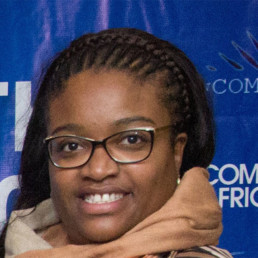
Written by Dilma de Araujo PhD (c)
SEND specialist. She has more than ten years of experience in education working in different educational institutions in the private and public sectors from early years to higher education levels, addressing special education needs; education policy research; gender inclusion and diversity.
‘A year nine boy of Black Caribbean heritage, claiming free school meals and with special education needs to represent a ‘typical’ student likely to be excluded from school.’
(Hawkins, 2019 p.14)
The Special Education Needs field involves a broad spectrum, where intersectional topics and issues such as gender, race and socioeconomic status are susceptible to emerge and often become a matter of great concern if the appropriate support and awareness initiatives are not in place. Hence, reflecting in the above statement by Hawkins (2019), it suggests that there are some significant points concerning financial, social and academic disadvantage and vulnerability indicators that should be addressed differently in our schools and educational institutions, raising awareness and incorporating a culture of dialogue, involving parents, carers and local communities actively in dynamic and creative activities in which different participants and agencies work in constructive partnership and collaboration (e.g. mental health and wellbeing practitioners; Local Authorities representatives, teachers, special education needs coordinators, local and national community activists and artists) aiming to improve not only black students, but all the multicultural and non-multicultural spectrum of school.
Thus, the role of schools, teachers and educational leaders can represent a crucial transformational factor. Hence, schools are designed to be a place where inclusion patterns and strong affinity bows of compassion, understanding and unity are consistently nurtured by adults, children and local communities. Aiming to generate diversity and equal dimensions within our multicultural society. To provide a healthy, safe and inclusive teaching and learning environments. Thus, school leadership teams have the responsibility to explore and address the following issues:
- Bias in the assessment process indicating over, under, misidentification and diagnosis;
- Rational parental response to historical discriminatory bias in the identification;
- Assessing migration’s resulting in different family health and cognitive endowments;
- Differential parenting behaviours and home learning environments;
- Differential experiences of deprivation between ethnic groups (Haye, 2021).
School senior leadership teams’ responsibility towards the implementation of an inclusive and diverse curriculum, programmes, initiatives and cultural activities in order to improve the multicultural perspective in their schools, taking into consideration students mental, cognitive, physical, emotional conditions, needs and circumstances raising the bars towards a positive learning performance and outcomes. In this line of thought, seven essential foundational strategies focus on the improvement of a culture of dialogue and reflective approaches concerning language, thoughts and actions, aiming to clarify different points of view and perspectives related to race, social, cultural inclusion.
Tip 1: Nurturing a culture of dialogue
Promoting dialogues involving racial matters in school can reduce bias, prejudice and pejorative attitudes. Thus, it is important reshape the teaching and learning approaches and behaviours may improve mutual respect, compassion, self and multicultural knowledge. E.g. cooperation involving students, teachers and other school staff. They can organize special pod-cast, webinars and school radio where life testimonials and experiences could address topics related to racial discrimination, macroaggressions and microaggressions.
Tip 2: Promoting reflection in and on action
Applying reflective practices to enhance teaching and learning is crucial to obtain valuable and effective results. Reflecting in-action provides the opportunity to explore and evaluate the academic practice and activities while the learning is taking place, opening the horizons not only for behaviour alignments and changings but also delivering and feedback strategies. Thus, promoting reflection-on-action practices is essential to improve the educational experience and activities built after interaction between teachers and students, mitigating biased attitudes and thoughts during teaching and assessment practices.
Tip 3: Preparing for and welcoming different perspectives
For many children and young people, teachers and school endeavours are the primary sources of information and knowledge. Hence, education institutions should be ready to face and address complex ways of think, behaviour and acting. To introduce potentially challenging conversations about race is essential to give quality training to teachers and staff, organizing regular meetings with parents and local communities and invest in multicultural representation in senior leadership posts in the educational organization.
Tip 4: Identifying students’ mental & emotional, cultural and traumatic journeys
The mental, emotional, cultural and traumatic journeys can impact and determine how children and young people absorb information and knowledge. Therefore, continuous evaluation, assessing, screening and reviewing students is vital to support teachers and students. Teaching practices can improve effectively when students’ needs are identified and properly monitoring based on child-centred approach, diverse curriculum, strong values and beliefs. Consequently, a positive impact can be generated in students’ performance, experiences and outcomes.
Tip 5: Encouraging the use of inclusive and diverse materials, resources and activities
The art of generating a culture of promoting human and racial rights, educational acceptance between adults and children, and constructing positive and dominant social and educational role models becomes the lynchpin of approaching complex topics. As a result, curricula, educational materials, schools’ displays and decorations, learning and leisure activities can be practical tools to combat the nature of privilege, supremacy and oppressive attitudes.
Tip 6: Exploring affective and embodied dynamic of learning
Starting from years early to higher education, recognizing and embracing the critical pedagogy in the daily schooling environment impacting teaching and learning practices through literature and other forms of creative arts aiming to explore and obtain the best of students’ ideas, beliefs, thoughts and aspirations. Learning dynamics could pass through a moment in which creative reflections are based on realistic expectations about a sense of identity, belonging, and existence, thus they could be co-related with all topics, disciplines and courses.
Tip 7: Creating a safe community learning environment
Local communities are an extension of the classroom and learning environment. It is crucial to the communication, interaction and mutual respect between school staff, local organizations and communities. Solid connections can be established through parents, governors and charities. It can help exchange experience, knowledge and update policies and general information.
In this context, addressing race paradigms and curriculum decolonization in the special education needs field can potentially represent a way to liberate bias, discrimination, preconceived thoughts, pejorative language. Additionally, all the changes and adjustments should be raised with the desire to generate productive and constructive empowerment by implementing effective anti-discrimination, SEND race and multicultural policies (also addressing migrants and refugee students). Thus, the field of SEND involving multicultural, race and education can essentially be empowered when individuals from different social, cultural, racial and educational backgrounds join forces not only to change policies but to be the ‘maker, developer and keeper’ of each one of them, aiming to embrace an open door of opportunities to nurturing the teaching and learning best practices.
Reference:
Hawkins, A. (2019) School Exclusion: The Parent Guide. London.
Haye. M, (2021). Special Education Jungle. Finding the racial minority voices in SEND. Retrieved [07/12/2021] from https://www.specialneedsjungle.com/finding-racial-minorityvoicessend/?utm_source=hootsuite&utm_medium=linkedin&utm_term=special+needs+jungle+ltd&utm_content=SocialOroMedia.
PjBL, (2020) Project Based Learning Toolkit. Retrieved [17/12/2021] from https://project-based-learning-toolkit.com/reflection/.
Thurber, A., Harbin, M.B, & Bandy, J. (2019).Teaching Race: Pedagogy and Practice. Vanderbilt University Centre for Teaching, Retrieved [07/12/2021] from https://cft.vanderbilt.edu/teaching-race/.
New Music Track Supporting the UK’s Leading Neurodiversity Charity and Celebrating Difference, Inclusion and Equality, in Education and Beyond

Written by Gary Grange
Consultant and neurodiversity advocate with a passion for supporting young people who are neurodiverse and working with NGO’s and businesses to create positive social impact.
On the 24th June the Neurodiversity charity the ADHD Foundation launch the Umbrella Project which for the first time ever will feature a new dance track called We Will Rise, by songwriter, rapper and neurodiversity advocate J Grange (ft London Community Gospel Choir)
This project aims to help raise awareness of the 1:5 people who are neurodiverse and to celebrate equality in society, especially for those who are neurodiverse, many experiencing inequality and struggling in the education system.
What is neurodiversity?
Neurodiversity refers to the different ways the brain can work and interpret information. It highlights that people naturally think about things differently. We have different interests and motivations, and are naturally better at some things and poorer at others.
Most people are neurotypical, meaning that the brain functions and processes information in the way society expects.
However, it is estimated that around 1 in 5 people (around 20% of people in the UK) are neurodivergent, meaning that the brain functions, learns and processes information differently. Neurodivergence includes Attention Deficit Disorders, Autism, Dyslexia and Dyspraxia.
J’s educational experience
J experienced an horrendous time in education. As a young person with ADHD, which was not diagnosed until weeks before he sat his exams, he was constantly excluded from school and eventually sent to a Pupil Referral Unit. This impacted on his mental wellbeing and he suffered severe anxiety, depression and even suicidal thoughts.
Sadly, teachers and schools just did not know how to support J. With around 1:5 young people thought to be neurodiverse the education system needs to change. It needs to embrace the “difference” neurodiverse young people bring and to have a strength-based approach to learning.
The current statistics are both shocking and show that 39% of children with ADHD have had fixed term exclusions from school and that children with ADHD have more than 100 times greater risk of being permanently excluded from school than other children.
Compare this to the fact that around 35% of businesses owners are neurodiverse and you can very quickly see that with the right support neurodiverse young people can be successful.
Schools, academy’s, colleges and universities are slowly beginning to change but they need help.
J’s track is about his journey but also a message of hope and a call to end inequalities and divisions. To watch the music video from the 24th June and to support the need for the education to be more inclusive for neurodiverse young people please click here
If you are a school, academy, college or university for more information about neurodiversity visit the ADHD Foundation Neurodiversity Charity online, or follow on Twitter, Facebook and Instagram
On Kindness: Intentionality, #DEIJ, and Difficult Decisions
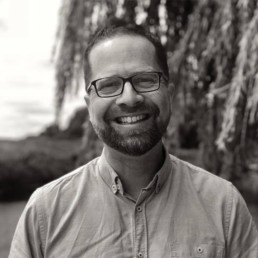
Written by Matthew Savage
Former international school Principal, proud father of two transgender adult children, Associate Consultant with LSC Education, and founder of #themonalisaeffect.
A few years ago, there was lots of talk about “random acts of kindness”, and many a school assembly took place across our schools, using that idea to encourage kind words and actions among and between staff and students.
However, I have since realised that kindness is never random. It is intentional. We make a conscious choice to be kind, or, conversely, not to be.
I reflected on this today, as a disabled, wheelchair traveller, treated like livestock at Madrid Airport: dumped in a corner and facing the wall, ignored, patronised and humiliated, and denied access to food, water or a bathroom, for 3 hours.
When finally pushed to the plane door, after every single able-bodied passenger and with minutes until take-off, I shared my experience so far, and then explained that I had mistakenly also been allocated a seat at the back of the plane, which I would not be able to reach without risk, pain, discomfort and delay, if at all.
I politely asked if the steward could request a passenger in a row further forward in Economy to swap with me, so as to avoid those things. They repeatedly, and emphatically, refused.
On hearing our conversation, a traveller in the very first Business row immediately stood up and insisted he swap with me and take my seat instead. The steward tried to persuade him not to do so, as he would lose his Business seat, but he made it quite clear that it did not matter, as my wellbeing and safety were more important.
I wish I could thank him properly. However, I suspect he would not mind. After all, when we intentionally choose kindness, we do so unconditionally and without expectation.
On the subsequent flight, I reflected further on this. In the leadership of our school communities, we also have the opportunity actively and intentionally to choose kindness, every single day – in our conversations and our actions; in policy and strategy; and in the decisions we make.
Sometimes this is easy, but when it feels difficult, we can and must still make that choice. We must ask ourselves what would be the kind thing to do. And then do that.
If kindness remains random, it will also be inequitably applied, and, in turn, perpetuate the marginalisation of those who need it most. Therefore, kindness should be at the heart of any #deij strategy too, and that strategy can help propagate intentional kindness as a result.
If we choose kindness, always, not only will kindness infuse the climate and culture of our schools, but others will follow our lead. Just like its absence, kindness cascades.
Does intentional kindness guide and permeate your school, or is it still random?
“Grandmotherly Duties” – Let Loose!
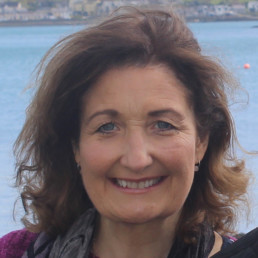
Written by Jackie Hill
An experienced teacher trainer, Jackie is a Founding Fellow of the Chartered College, Network Leader for WomenEdNW and Co-Founder / Strategic Leader for WomenEdNI.
NB This blog is suitable for all ages…
“Grandmotherly duties” – thoughts around this phrase have been rumbling in my head for some time. I’ve never been quite sure if, when or how I should share those rumblings and it was only on a recent trip to a “soft play” centre with my two favourite little learners that I decided it was time to “let loose”!
Firstly, I want to make it very clear that, in my experience, becoming a grandparent can be one of the best new roles that you can ever take on. However, I have been surprised to find that it can also bring an unwelcome “tag”…
Let me explain: in January 2019, both my husband and I moved to a more flexible working pattern (3 days a week) but the processes to arrive at that, and the perceptions regarding our motivations, were quite different.
For me, the consequence of my request for a more flexible working pattern, was that I had to accept a move to a new role, giving up the one that I had loved and had hoped to retain. Of course, this is a scenario which has faced many other women in education – I just had not expected it at that stage in my career. I had explained that I wanted to be more actively engaged in certain professional networks, interests and activities – all of which would actually have enabled me to carry out my workplace role even more effectively. These included DiverseEd, WomenEd (I’m Co-Founder and Strategic Leader in WomenEdNI and a Network for WomenEdNW), and The Chartered College (as a Fellow, and more recently Council Member).
Coincidentally I had become a grandmother a year beforehand and when the initial communications announcing the change in my professional role appeared, the focus had shifted. Yes, the explanation given for the move was that I wished to focus on other things, but only one was mentioned – “grandmotherly duties”! I was really taken aback as I felt it created such a false impression – so I asked for it to be changed immediately. And it was, straightaway, thankfully.
Now, anyone who knows me, also knows that I adore my grandchildren (more than one now!) and may be wondering why I would be so annoyed at this interpretation. Well, in my view it goes to the core of my identity or rather the way many people’s perceptions of identity change when they find out you’re a grandmother – you’re now “over the hill” / past your best / on the way out – too OLD! I subsequently discovered that one of my colleagues had a 4 year old much loved grandson but rarely spoke about him, for exactly this reason!
Of course, this is a reprise of something similar that many colleagues in education experience earlier in their careers when they are told “it’s time to just focus on being a mum”. However, when your children have grown up, you would think those judgmental assumptions would now be relegated to the past, so it’s a shock when they reappear in another way later in your career.
Jo Pellereau’s blog “Concentrate on Being a Mum” (and forget about work) outlines her experiences beautifully (Pellereau, 2020). Her assertion that “in many ways my commitment to education has been increased by my new identity as a mother” really resonates with me. My new identity as a grandmother has not only re-invigorated my commitment to education but has also taken it in new directions which have been both challenging and uplifting.
I asked my husband if anyone ever said to him “Now’s the time to focus on your “grandfatherly” duties”. His look of disbelief, said it all!!! Of course, they hadn’t!
This also got me thinking about “grandmotherly duties” – what are they? What could or should they involve…?
Of course, each grandparent’s circumstances are different, so there can be do fixed set of “duties”, job description or person specification for this role that would work for all. However, I’d like to share just a few grandparently duties that are important for me:
- Try to be a visible role model – for other grandparents, parents, carers and, of course, my family (especially the wee ones). Remain professionally active and involved, and, where possible, demonstrate that abilities, understanding, desire to keep learning and sharing do not have to cease to exist or be important, just because a person has this additional role.
- Continue to develop my “voice” to support schools and other education settings to become diverse, inclusive and equitable communities – where different families, like my grandchildren’s, and indeed all others, know and feel they belong.
- Look for ways to help my grandchildren discover the wider world outside their own little corner, so that they realise they are global citizens, and understand how that opens the world to them (as well as their responsibilities to look after it and one another).
- Help them to develop the joy of learning and also of reading all sorts of books (was it wrong of me to feel a little bit pleased when my grandson became upset recently because the library was closed!?!?)
- Spend time together and have fun.
What other “duties” have I missed? What would you add?
“DiverseEd; A Manifesto” feature in my day of grandmother duties because I took it with me to read at Soft Play! (Yes, I was the only Grandma doing that…) The wonderful Chapter on Age includes insightful stories and reflections of others, highlighting the underused and undervalued potential contributions that many older colleagues still have to offer. This also cuts across some of the other Protected Characteristics and, as the Editor for Chapter 4 “Marriage and Civil Partnership”, I’ve read, researched and reflected a lot about families and relationships, and firmly believe that ALL families should “experience the same positive environment, level of support, opportunities and VISIBILITY across the curriculum”. The fact that this includes families with, or even headed by, grandparents is sometimes missed.
So, in practice, how should that visibility work? In what ways could it break away from stereotypical images (rather than reinforcing them)? How should it be demonstrated through the staff in our schools and other educational settings too?
In reflecting on all of this, I’ve been reminded of the important role that my own amazing Gran played in my upbringing and her enduring influence on me. She lived with us and she was a wise, constant and loving presence, a cornerstone for our immediate, and indeed wider, family – while at the same time being an independent, working woman who read widely, and managed her own finances plus other responsibilities, whilst also supporting others. In her sixties, she travelled abroad for the first time, on her own, to Australia. She spent several months there, and wrote to us regularly to share her experiences – my brother still has the didgeridoo she carried back for him!
Similarly there are people like her today – who are ready to take on new challenges, to develop their professional and/or personal roles, and who are fit, willing and able to continue doing so. What a waste when we write them off, or high-handedly decide for them that it’s time to “focus on being a mother” or their “grandmotherly duties”. The choice should be theirs and roles need not be mutually exclusive.
Moreover, there is a clear case for employing older workers (Makoff A, 2021) – increased knowledge-sharing through a multi-generational workforce has been identified as a particular benefit. Makoff cites Stuart Lewis, founder of Rest Less (a digital community for the over-50s) who asserts that “demographic and societal changes including an aging population, delayed retirement and multi-generational workplaces will continue to be the direction of travel for a long time to come… the employers and HR teams that recognise this early, get ahead of the trend and embrace it early are going to be the workforces and businesses that thrive over the next decade.”
So I’ll leave you with some questions to consider:
- How do you view colleagues and others in your school community and/or education setting and/or networks who are grandparents (or are of an age that they could be grandparents)?
- Have you relegated them to the “former players” stand or are you making the most of their experience, expertise and possibly even renewed outlook and perspectives on education, learners and schools?
- How could you ensure that diverse families, relationships and roles are visible and valued in your classroom, staffroom / workplace and communications?
References
Pellereau J, (2020) Concentrate on Being a Mum. Available at: https://physicsjo.science.blog/2020/10/06/concentrate-on-being-a-mum/
Kara B and Wilson H (2021) DiverseEd: A Manifesto University of Buckingham Press
Makoff A (2021) How can employers embrace an age-friendly workplace Available at: https://dileaders.com/blog/how-can-employers-embrace-an-age-friendly-workplace-culture/
Wellbeing: Why it’s Time to Take an Ecosystemic Approach
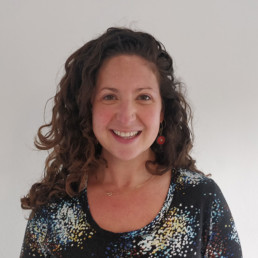
Written by Nikki Levitan
Nikki started The Visionaries out of her passion and commitment to supporting young people and those working with young people to discover their visionary potential. She helps to resource others to play their part in building a healthier, just future.
A whole systems approach to wellbeing is a growing buzzword and tactic, one that is becoming higher up on the agenda to improve productivity, retention and a sense of belonging within the workplace.
The science of wellbeing also shows us the importance of taking a preventative approach to prevent mental health reaching crisis point later down the line. Something that is still all too common amongst young people.
But when it comes to changing a whole system and culture, it is natural to feel a sense of stuckness and overwhelm.
“The only way to make sense out of change is to plunge into it, move with it, and join the dance.’ – Alan Watts
A great way to explore how to enact lasting systems change is to look at the healthy functioning of natural ecosystems, like a rainforest or a national park. They remind us of the importance of diversity, interdependency, collaboration, and to embrace cyclical thinking. We can use these as a way to reflect on and improve our own education systems.
Like the species within an ecosystem, members of your organisation act like a community network of interactions between organisms and their environment. They create together, influence one other and are all affected by external disruptions and change outside of their control.
At The Visionaries we are passionate about supporting youth organisations. Burnout and endless firefighting is a common reality for teachers, youth workers and informal educators. Many struggle to take the time to look after themselves and leave working days feeling a sense of helplessness, wishing they knew how to do more to support the needs of the young people.
This cannot be left on the shoulders of individuals, none of us has this capacity to hold what we do alone. As the saying goes, “It takes a village to raise a child”, and it is only when entire organisations, institutions and communities commit to a culture of wellbeing that the mental, physical and social health of their members and beneficiaries can truly be supported.
Our one day training on 31st May 2022 will give you space to explore your work within an ecosystemic framework, providing simple ways to weave wellbeing into the everyday culture of your organisation, that anyone can lead, and which can be put into practice immediately.
You can expect;
- Self and collective enquiry: How do we create a culture of wellbeing? What does it mean to be well individually/collectively? How does tending to our wellbeing have a positive impact in communities we are part of?
- Appreciative Inquiry: Discover what you are already doing well; Dream into what could be; Design what should be; Deliver what you can do and how to do this.
- An introduction to our ways of wellbeing – We apply biomimicry and nature’s intelligence to enhance our education systems for the long term.
The intention is for you to retreat: come away from your busy work environment, slow down, tune in, learn together and create space to map out your ecosystem. Who is in it? What roles do they play and what needs to happen to affect positive change for the whole?
See more details here and book your place now, there are only a few spaces left. We keep these training days small and intimate to ensure space for deeper enquiry and relationship building between education leaders.
https://www.tickettailor.com/events/thevisionaries/673864
You can see our full Regenerative Educator Training Course online here and see the other ways we support educators to create more life-affirming learning environments on our website here.
Facing The Challenges of Discrimination and Migrant Integration

Written by Isabelle Watts
We are a Young Economic Summit Team from Sheffield Girls' who have reached the UK national finals. This is a topic we are all passionate about, and we have come up with a solution to reduce the discrimination migrants face.
As part of the Young Economic Summit we have researched the challenges migrants face and have developed a solution to mitigate these challenges. We are passionate about mitigating the discrimination migrants face and ensuring that they feel welcome into the countries which they choose to migrate to.
What challenges do migrants face?
Migrants face many challenges when they migrate due to discrimination from domestic born citizens. The media often fuels the discrimination by oversimplifying, misrepresenting or embellishing stories in order to attract attention. Consequently, people’s perception of migrants becomes negative and in many countries, such as the UK, migrants are seen as poorer, less educated and more likely to be unemployed than is the case. This creates barriers between migrants and domestic born citizens as they have pre made judgements of what they believe migrants to be.
However, it isn’t just the media that is exacerbating the challenges migrants face; it is also the policies implemented by the government. In recent weeks, the government has announced a new policy whereby any adult who comes to the UK without authorisation could be considered for relocation to Rwanda. Not only does this policy take away refugees’ control of their own lives and makes them more vulnerable to smugglers and traffickers, it also creates the idea that countries can pay to get rid of the responsibilities they signed up to under the 1951 Geneva Convention.
The desired situation:
The desired situation is a cohesive society where migrants and domestic born citizens are integrated and migrants feel welcomed into a country. Whilst migrants may inevitably face challenges, the aim is to try and support them as well as possible and remove the discrimination and intolerance of our society.
How to reach the desired solution:
One way in which we are trying to reach the desired situation is by conducting PSHE lessons on migration. In the long run this would reduce the discrimination migrants face as children will be taught what the different types of migrants are, what challenges they face, how to spot misinformation, as well as addressing the biases they may have already developed. Moreover, a supportive atmosphere will be created which encourages children to talk about their cultures and be proud of them. It is imperative that these lessons take place in primary school as by the age of 12/13, attitudes to race are fixed and become increasingly harder to alter. Although migration is in the PSHE curriculum, it isn’t compulsory and many schools avoid it. Therefore, we propose that set lesson plans are made which are compulsory to teach in PSHE lessons.
Another aspect of our solution is a widespread social media campaign reducing the misinformation spread about migrants. As part of this we have created eye catching social media posts that have facts that break down the stereotypes surrounding migrants. Consequently, people’s perception of migrants will begin to change and prejudices will be broken down.
Overall, we propose a twofold approach that takes into account the short and longer term. The national anti-racism media campaign will reduce discrimination in the short run, whilst the PSHE lessons will have a longer term effect. We believe that this is the most efficient strategy of reducing the discrimination migrants face due to misinformation, and allowing society to become more cohesive.
Please visit our website to find out more about our research, and fill in the form to show support for our solution.
Website:https://sites.google.com/she.gdst.net/migrant-integration-challenges/home
Form:https://docs.google.com/forms/d/1p363lLoHvigT2xWaZ0GnmNlQ-EOUrSsasSRbOsjKiG0/edit
Bibliography:
- Conzo P and others, ‘Negative Media Portrayals Of Immigrants Increase Ingroup Favouritism And Hostile Physiological And Emotional Reactions’ (2021) 11 Scientific Reports
- ‘What Are The Predominant Stereotypes About Immigrants Today?’ (Re-imagining Migration) <https://reimaginingmigration.org/what-are-the-predominant-stereotypes-about-immigrants-today/> accessed 15 May 2022
- Beirens H, and Davidoff-Gore S, ‘The UK-Rwanda Agreement Represents Another Blow To Territorial Asylum’ (Migration Policy Institute, 2022) <https://www.migrationpolicy.org/news/uk-rwanda-asylum-agreemen> accessed 15 May 2022
- Beirens H, and Davidoff-Gore S, ‘The UK-Rwanda Agreement Represents Another Blow To Territorial Asylum’ (Migration Policy Institute, 2022) <https://www.migrationpolicy.org/news/uk-rwanda-asylum-agreemen> accessed 15 May 2022
- Barnes D, ‘Why Helping Children Understand The Complexities Of Migration Is Vital’ (Teachwire, 2022) <https://www.teachwire.net/news/why-helping-children-understand-the-complexities-of-migration-is-vital> accessed 15 May 2022
- ‘Plan Your Relationships, Sex And Health Curriculum’ (GOV.UK, 2022) <https://www.gov.uk/guidance/plan-your-relationships-sex-and-health-curriculum#using-external-agencies> accessed 16 May 2022
DEI in an International Setting
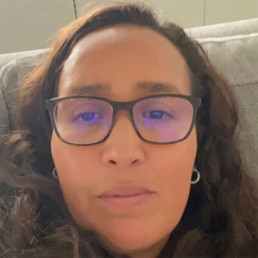
Written by Esther Mustamu-Daniels
Esther Mustamu-Daniels has 20 years of teaching experience working in London and the Middle East as a Class teacher, Education officer, Middle Leader and DEI Lead. Currently working at British School Muscat, Esther co-leads the DEI work across the whole school.
Many international schools are on or starting their journey of awareness of diversity, equity and inclusion. Because cohorts in these schools are so diverse by nature, often staff feel that there are no problems and that racism/discrimination is not a factor in the schools. This is usually very far from the truth.
Be brave; be vulnerable and start the challenging and honest conversations that are needed for change to take place.
Because of recent high profile events, diversity, equity and inclusion is a necessary space in all educational settings and that international schools, who send their alumni to universities all over the world, would do well to support, inform and equip students with knowledge and language to engage with the different topics around DEI.
How do schools start tackling, delivering and addressing these needs?
Start with the staff: build open conversations. It is important to know that not everyone is at the same place on their journey and also that there are different opinions. Gathering the ‘tone’ of your school as well as allowing safe spaces to share experiences is a key factor. What is important is that this is not only talk; action is also needed. This is an emotional and difficult journey so be sure to provide space and time to reflect and learn.
Action: Build a plan of how you will move forward. You may need to conduct a survey or gather some research and data from your school’s stakeholders to help you focus on what the priorities are in your specific setting. Are there specific needs or policies that need addressing first? This will help to focus on each step and also assign roles or tasks to specific people. This should be flexible so that it can be adapted along the way.
Leadership: Is there someone leading the work? Do SLT support and value the work being done? Does your leadership understand the why and how? This is important because without this it is extremely difficult to implement significant change. Leadership needs to take accountability for the work being done in their school. Is that person being paid?
Support: This is also an essential element. Who is supporting the people completing the work? Are they being emotionally supported as well as practically? The people leading or sharing this work may have been personally impacted or triggered by the issues raised; how are they being supported?
What is important to note is that action in any form is good and a positive step in the right direction. Addressing and tackling these issues will take time and for long lasting impact will need to be embedded in the culture of your school or environment. This is not a badge or a t-shirt; this is a cultural shift of readdressing mindsets.
If you are involved or starting up; learn, speak and support. Being an ally and everyone doing their part is imperative. There is so much work being done at the moment. Twitter is an excellent source of examples, webinars and organisations that can support you on your journey.
Queer Clubbing – Creating Intentional Queer Space in Educational Settings

Written by Edel Cronin
Secondary school senior leader and co founder of Bristol Queer Educators, very Queer and very Irish.
During my PGCE I had one lecture where the lecturer spoke about being a LGBTQ+ Educator. They spoke of their experience growing up LGBTQ+ in the 1960s onwards. One of the messages that stayed with me is the importance of Queer spaces for LGBTQ+ people. For that lecturer living in a society where there was active policing of LGBTQ+ lives, Queer people found ways to create space and community. Without these spaces LGBTQ+ people become isolated, lack space where their sexuality and/or gender is affirmed and don’t get an opportunity to learn their history.
During our school Pride last year, I spent a term doing all the usual things that it takes to help coordinate a school Pride. Our Pride events ended with a whole school Pride Day, as part of that day LGBTQ+ club had a lunchtime party where the focus was celebration. Students had a Pride Photobooth, we had music playing, the school canteen made rainbow cupcakes for the party, students dressed in rainbow colours and wore their LGBTQ+ flag like capes. While sitting in that room taking a moment to observe what we had created I realised that what was happening in that room, Queer Joy free from risk of homophobia or transphobia, this was the most important work I could do. If you have a regular space where you are free from the ‘risk assessment’ that comes with being a LGBTQ person+, a space where you can learn your communities history, share your favourite books or films that celebrate your lived experience and bask in the joy that comes with the freedom of being in a Queer Space, over time you will become more affirmed in your own self, you will be able to move around the world with the self-assurance needed in a society that tells us we shouldn’t exist.
Schools should absolutely spend intentional time and resources educating all the people in their community about LGBTQ+ history, provide anti-homophobia and anti-transphobia training and celebrate LGBTQ+ people. Doing so will help use build coalition between LGBTQ+ communities and those outside the community, reduce homophobia and transphobia and liberate us all from the burden of heteronormative stereotyping. However, it is also important that before doing this work school leaders have policies in place to support the work, provide staff and students with scripts on how to have difficult conversations and challenge homophobic and transphobic language. And provide space for Queer people in the building, should they want to access it, where they do not have to worry about being the ‘Gay Oracle’, experience homophobia, transphobia and risk assess how Queer they can be. For some people a virtual space will provide them with the best support, others will benefit from sign posting of networks or groups that exist outside of the school community and for others it will be having a physical space.
Ensuring that in person or virtually student and staff groups are available to LGBTQ+ people also allow Queer people the space to be surrounded by people who have similar lived experience that can provide or direct them to Queer inclusive support, learn about Queer stories and histories and experience the joy that is being Queer in a Queer space. It removes the burden that can come with moving from a Pride assembly to a classroom where you are only Queer person. By making intentional Queer spaces in educational setting, we are also making an active statement as Educators that we are taking up space in educational spaces that are traditionally positioned as a battle group for LGBTQ+ rights. Let us ensure that all our educational spaces move with intentionality to liberate and acknowledge loudly that Queer people have always been and will always be in educational spaces.

